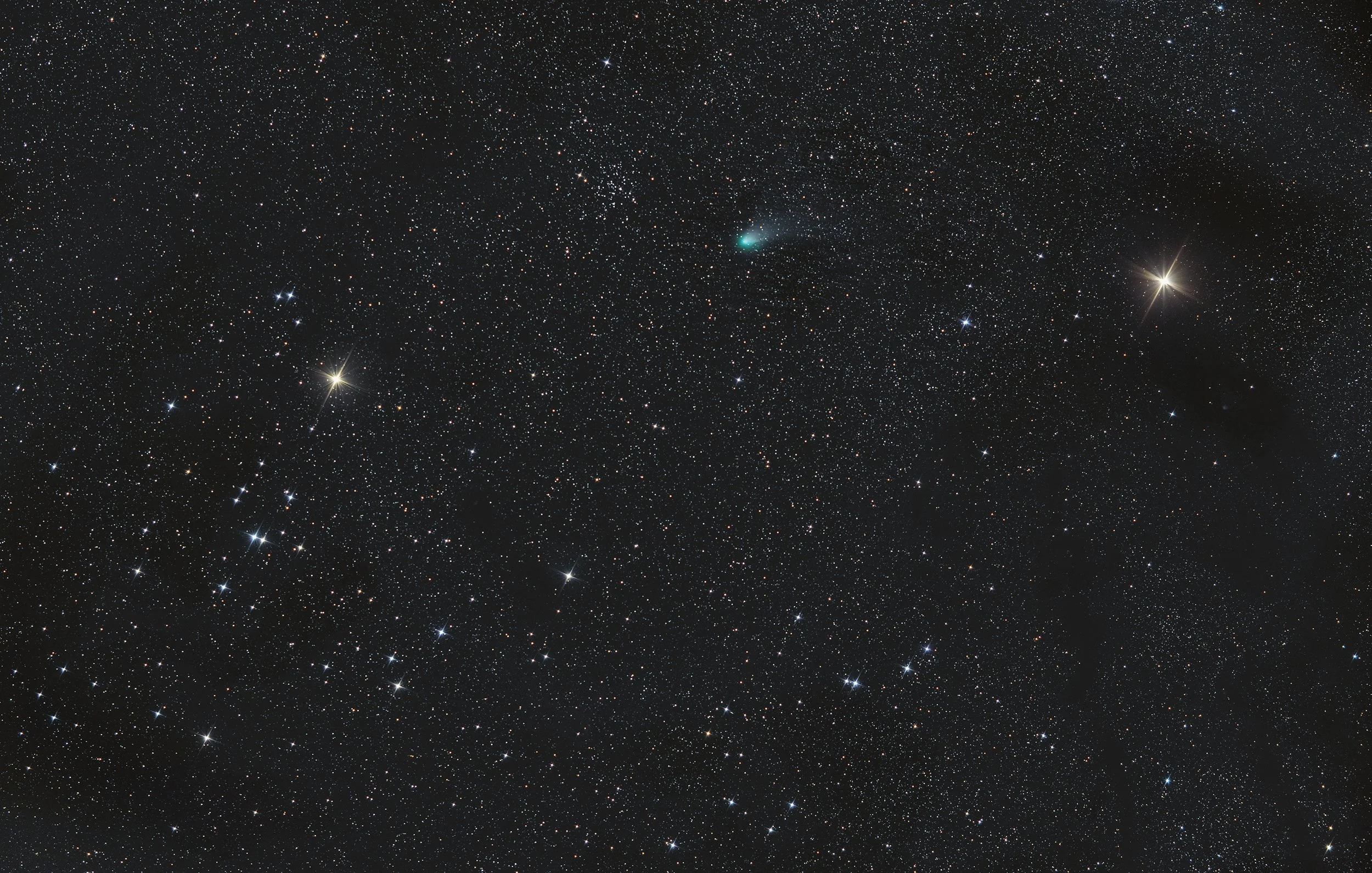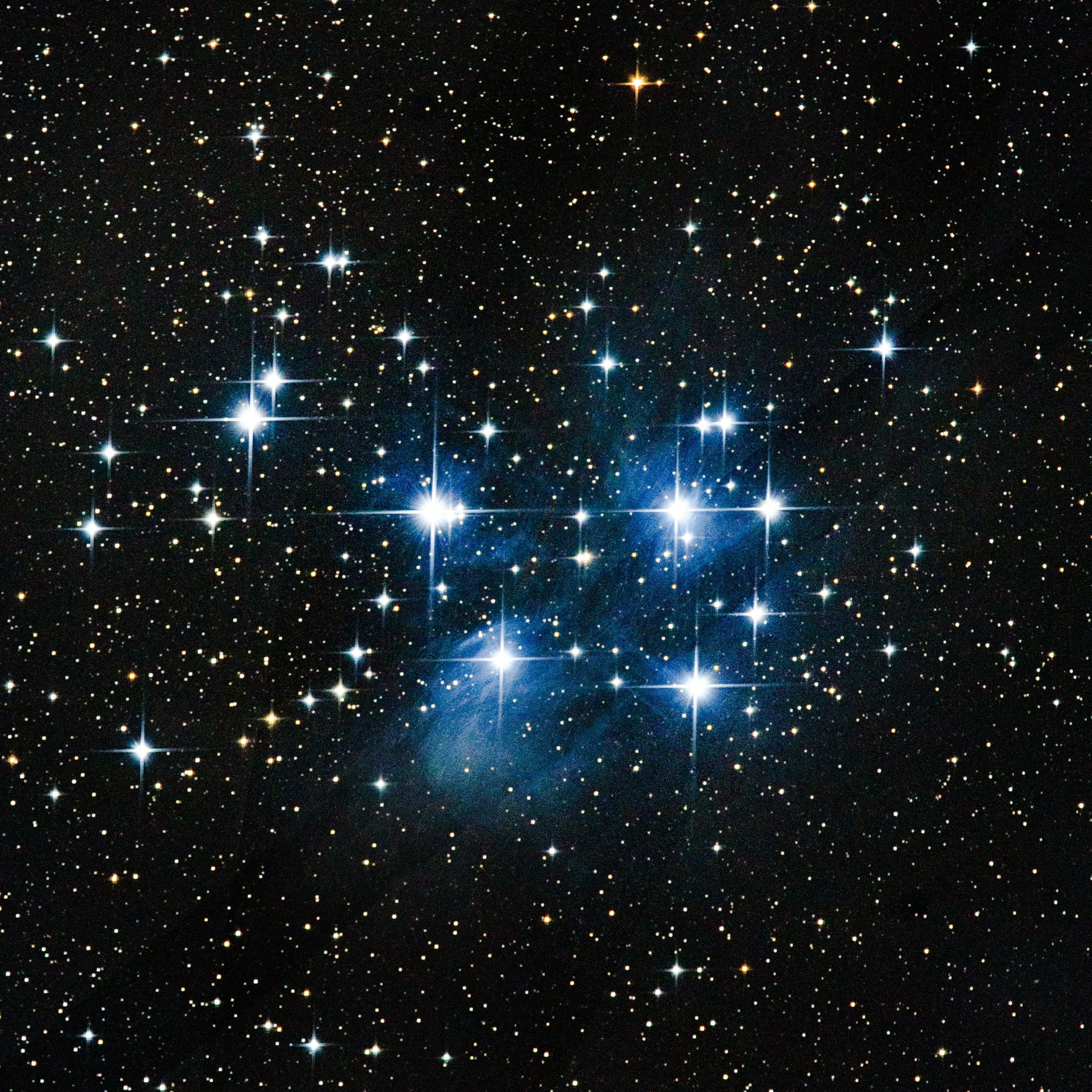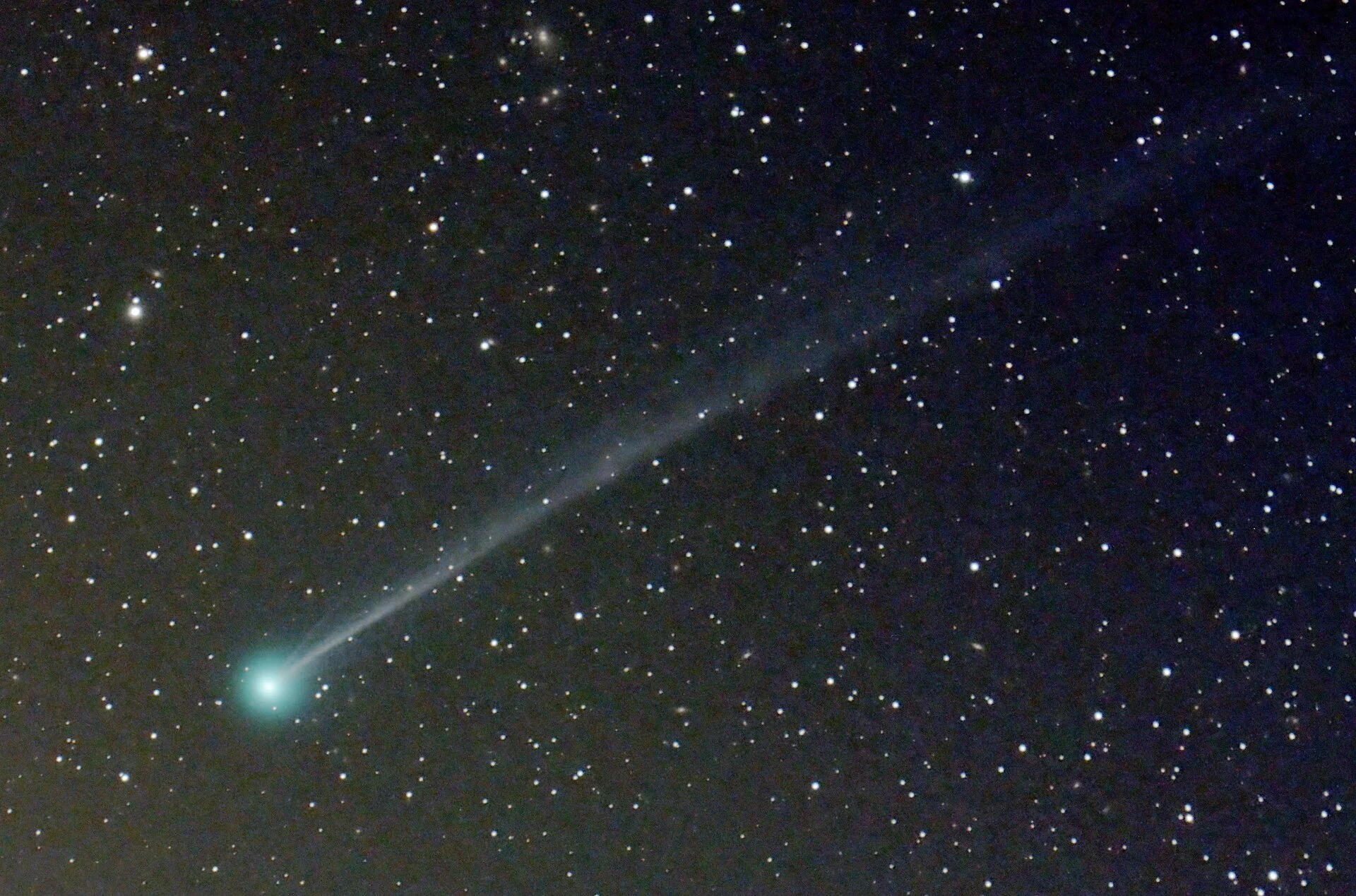
The Haydes star cluster as seen in February 2023, with comet C/2022 E3 (ZTF) in the foreground. Image by Brad Hoehne.
Program Saturday, November 22: ON
The forecast for tonight at the John Glenn Astronomy Park calls for clear skies and cold temperatures. If you’re attending this, the last scheduled program of the year, be sure to bundle up. Nights under the stars can feel much colder than the temperature on your weather app would seem to indicate.
There are still a number of passes left for Saturday’s program.
Parking for our weekend programs
Because we have limited parking, free passes are required for our public programs on Friday and Saturday nights. Passes for upcoming programs can be found at:
http://registration.jgap.org
If the date you wish to go is marked “full” note that we often release additional passes for programs on the Wednesday before each weekend.
Space is infinite, our parking area is not.
JGAP Is a dark site deigned to give people a place to enjoy pristine, starry skies. It takes time for human eyes to adapt to dark conditions after they have experienced bright lights.
So, please be considerate to others when driving in after dark and turn your high beams down. This helps keep our observing field dark. Then, once you have parked, please turn off your headlights right away.
If you have trouble in the dark finding your way to our field from the parking area, wait a minute or two without exposing yourself to bright light. Then walk. You’d be amazed what your eyes can do if you just give them a chance.
02. Astrophotography
01. Fall Skies
Image of M45, The Pleiades, by Brad Hoehne
On fall evenings, the constellations Andromeda, Cassiopeia, Perseus, Pegasus, Taurus and others rise.
Some of the more prominent celestial objects in this region of the sky are:
The Pleiades
The Andromeda Galaxy
The Perseus “Double Cluster”
The Haydes Cluster, with Aldeberan
M33 (The “Triangulum” galaxy)
This year, Saturn joins the show, and will be in our scopes on every clear fall evening.
03. Saturn’s Thin Rings
Illustration generated using Stellarium
Saturn is at its best this fall, but things will seem a bit different this year.
Saturn takes 29.5 years to go around the sun. Its axis is tilted to the plane of its orbit. As it rolls about, we see the rings from different angles. Every 15 years, we pass through the plane of the rings.
This year, we’re seeing the rings nearly edge-on.
We’ve already passed through the plane of the rings, back in March, but that occured on a day when the planet was lost in the glare of the sun.
We’ll get another chance to see an event like this (almost). In November of this year, will nearly vanish as the Earth’s orbit, titled a tiny bit relative to that of Saturn, gives us a view that nearly repeats the ring plane crossing.
Then we’ll have to wait another 15 years for it to happen again.
Image by Alex Mullins
On most clear, moonless, evenings, you’ll find folks taking advantage of the dark skies at JGAP to shoot images of the night sky.
This pastime is known as astrophotography.
All are welcome to bring cameras and telescopes to JGAP to try their hand at this.
If you get a good image, why not share it with us by using our Instagram hashtag: #jgastropark
Comet C/2025 R2 SWAN wikipedia
Several moderately bright comets are in northern skies this month.
The easiest to spot is C/2025 R2 (SWAN), passing through the skies up from Saturn in the evening. If have have a pair of binoculars, it might be visible as a very faint fuzzy blob.
Comet C/2025 A6 (Lemmon) is best seen where skies are clear in the west. It is currently setting in the southwest just after sunset.
Comet C/2025 R2 (SWAN), will get better of the coming month, and C/2025 A6 (Lemmon) will remain challenging in twilight.
Upcoming Programs
We do programs on Friday and Saturday nights from March through November, weather permitting.
Because we have limited space for cars, free parking passes are required on program nights.
Space is infinite, our parking area is not.
https://registration.jgap.org/
If the date you wish to go is marked “full” note that we often release additional passes for programs on the Wednesday before each weekend.
(The JGAP grounds are open for individual stargazing on non-program nights. Please feel free to come on in. Parking passes are not required. You may bring chairs, telescopes, cameras and tripods if you wish.
November 21-22: Greek Drama in the Fall Skies. Rising high in the northeast are a collection of constellations that tell the story of the vain queen Cassiopeia, her daughter Andromeda, Perseus, a flying horse and a sea monster. Also, Saturn’s rings are almost invisible this week. This is the last weekend of programs in 2025. 5:30 PM.
Predicting the Weather
The Clear Sky Clock
The chart below is an hour by hour prediction of how clear the skies will likely be over the coming two days. Cloud cover and transparency are the critical data points. In general, dark blue is best. If both transparency and Cloud Cover are indicated as dark blue, then skies are likely to be clear and filled with stars. Lighter colors are proportionally worse.
In recent months, the predictions of the Clear Sky Clock have been somewhat unreliable, so use at your own risk.
Clear Outside
The forecasts from the website Clear Outside have proven very accurate and reliable in recent months and give a great indication of what sort of clouds to expect, if any.
ClearOutside forecast for the Hocking Hills
Astrospherics
Another great site for predicting conditions on an hour by hour basis is Astropherics, whose model of late is better than that of the Clear Sky Clock. Access JGAP’s location with this link:
Weather.Gov
Finally, the best site for predicting the weather is the site from which all the data comes from in the first place, the National Oceanic and Atmospheric Administration’s forecast page. The best forecast for JGAP is the Logan, Ohio hourly pinpoint forecast. Find it here.
The most critical part of the forecast is the blue line which represents the predicted cloud cover for that hour. Generally 50% or higher is not good.
Incidentally, Weather.gov is a product of NOAA, the National Oceanic and Atmospheric Administration, which has suffered devastating cutbacks in recent days that may undermine its very existence. NOAA provides data that commercial services call upon for their own forecasts as well as conducts research that helps improve forecast models in the future. Please consider speaking up for it.
Support the Friends of the Hocking Hills State Park
Do you love the Hocking Hills State Park? Would you like to help projects that make HHSP an even better place? Do you love JGAP?
Then consider joining The Friends of the Hocking Hills State Park, an organization that supports projects like JGAP and other enhancements to the most beautiful park in Ohio.
http://www.friendsofhockinghills.org/
Join our Facebook and Instagram Communities
We have a Facebook page
https://www.facebook.com/JohnGlennAstronomyPark/?ref=bookmarks
… and an Instagram Page
https://www.instagram.com/jgastropark/
On both we are regularly featuring items of astronomical interest.
If you have questions that you’d like addressed in these feeds, feel free to Facebook Messenger them to us!
“The greatest thing we can do is inspire young minds...”
- John Glenn








